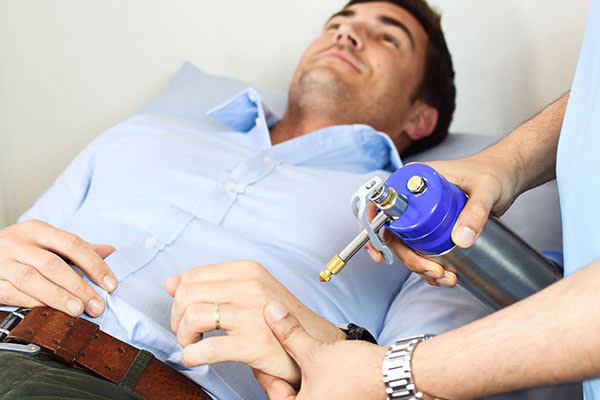
Surgical Dermatology
At Dermatology House, we strive to offer safe and effective surgical treatments for certain benign, pre-cancerous and cancerous skin growths. Our dermatologists have spent years honing their skills in this regard. They perform various minor surgical procedures in their rooms, under local anaesthetic.
Book an appointmentWe provide different removal methods for each type of skin growth and will recommend the best method based on the location and size of the skin growth. Examples of skin growths that can be treated:
Skin tags are small blebs of skin that stick out from the skin's surface. They are usually benign, meaning they are not cancerous, and do not cause long-term problems. However, many people find them unsightly or inconvenient (as they may get caught on clothing or jewellery) and choose to have them removed for these reasons.
Warts are a type of non-cancerous skin growth caused by the transmission of a specific virus through tiny cuts in the skin. The infection causes rough, skin-coloured bumps to form on the skin, most commonly on the hands, feet, face, genitals and knees. A simple procedure, involving liquid nitrogen therapy, could be all that is needed to clear a stubborn wart.
A skin biopsy involves taking a small sample of skin tissue and sending it away for examination by a pathologist under a microscope or for other laboratory tests.
Here are several reasons why our dermatologists may recommend or perform skin biopsies:
- Diagnosis of Skin Conditions: Skin biopsies help dermatologists diagnose various skin disorders, including but not limited to skin cancers, inflammatory skin conditions, infections, autoimmune diseases, and genetic skin disorders.
- Detection of Skin Cancer: Skin biopsies diagnose and determine the extent of skin cancers, including melanoma, basal cell carcinoma, and squamous cell carcinoma. Early detection through biopsy is crucial for effective treatment and improved outcomes.
- Evaluation of Suspicious Lesions: Dermatologists may perform biopsies on moles, growths, or other skin lesions that exhibit irregular features, such as changes in colour, size, shape, or border, helping to assess whether the lesion is benign or potentially malignant.
- Monitoring Disease Progression: For chronic skin conditions or diseases, periodic skin biopsies may be recommended to monitor the progression of the disease and assess the effectiveness of ongoing treatments.
- Identification of Infections: Biopsies can aid in identifying the cause of skin infections, including bacterial, viral, fungal, or parasitic infections.
- Differentiation of Rashes: When a skin rash or eruption has an unclear cause, a biopsy can provide insight into the underlying pathology, aiding in accurate diagnosis and treatment planning.
It's important to note that while skin biopsies are generally safe procedures, they are performed only when necessary and after careful consideration by our dermatologists. The decision to perform a biopsy is based on the patient's medical history, clinical examination, and the need for additional information to make an accurate diagnosis.
Cryotherapy, which involves the use of liquid nitrogen, is employed for various therapeutic purposes.
Some common uses of cryotherapy in dermatology include:
- Wart Removal: Cryotherapy is often utilized to freeze and remove warts, which are caused by the human papillomavirus (HPV). The freezing destroys the wart tissue, prompting the body to naturally eliminate it.
- Skin Lesion Removal: Benign skin lesions, such as seborrhoeic keratoses and skin tags, can be treated with cryotherapy. Freezing these lesions causes them to fall off as the skin heals.
- Actinic Keratosis Treatment: Cryotherapy can address precancerous skin lesions known as actinic keratoses. Freezing these lesions helps to eliminate abnormal cells.
- Skin Cancer Treatment: In some cases, cryotherapy is used to treat certain superficial skin cancers, particularly for lesions that are small and localised.
Overall, cryotherapy is a versatile and effective tool, providing various benefits for the treatment of skin conditions. The procedure is generally well-tolerated, and its success often depends on the specific dermatological issue being addressed. See one of our dermatologists to determine the suitability of cryotherapy for your particular skin concern.
Minor surgical excisions are performed to remove benign or potentially harmful skin lesions. This includes moles, cysts, skin tags, and other growths. As such, minor excisions can be used for both diagnostic and cosmetic purposes. Minor excisions can be done at our practice as outpatient procedures, requiring local anaesthesia only. Depending on the type of excision procedure performed, stitches may or may not be required.
Consult with one of our qualified dermatologists to determine the most appropriate type of minor excision for your specific skin concern.
